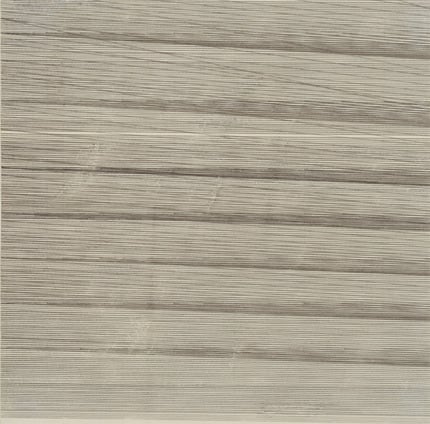
These are exciting times in art history. A wealth of postwar artists who worked at the margins of Euro-America, beyond the Western canon, are being rediscovered, many now receiving their own monographic exhibitions in museums. A special place is being claimed for female artists—one may think of Lygia Pape from Brazil, Gego from Venezuela, and Saloua Raouda Choucair from Lebanon—and the work of the late Indian-Pakistani artist Nasreen Mohamedi (1937–1990) is equally ripe for reconsideration. Born in Karachi, Pakistan, Mohamedi studied at Saint Martins School of Art in London and lived in Paris, Bombay, Bahrain, and Kuwait, finally settling in Baroda (now known as Vadodara), India, where she taught at the University of Baroda, still a hotbed for Indian artists today. But despite her importance, rigorous art-historical study of her work will not be easy, as most of her pieces are undated and untitled, though the core of her production has been identified as dating from the 1960s, ’70s, and ’80s.
Unlike much contemporary Indian art, Mohamedi’s works feature an austere, mostly black-and-white palette and stark geometric compositions, mostly constructed through lines traced in graphite or pen and ink on paper, though at times she also captured the geometry of real-life through photography. Her art is often compared with that of Agnes Martin, with whom she was juxtaposed in Documenta 12, in 2007, but there is more to her work than such associations can convey. As her recent retrospective makes clear, her compositions are neither rigid nor flat, and perhaps not even abstract; one must be cautious when using the Euro-American modernist grid, with its well-known hostility to literature, language, and narrative (famously elucidated by Rosalind Krauss), as a reference here. One might think instead of metaphysical abstraction; Geeta Kapur has argued that Mohamedi’s work is ultimately about the self, her lines appearing like “a remote, idealized trajectory of this stricken body.” (The artist suffered from Parkinson’s disease for the last decade of her life.) Mohamedi was interested in textiles, and indeed the organic, handmade quality of weaving has much in common with her work. Several drawings on view in the show almost appear to be the result of twisting a fabric’s weave and stretching it in space, at times producing an explosion of loose threads. Successive lines of graphite on paper, drawn at slightly varying angles, compose a fabric of traces that attain a perspectival, lyrical intensity as if floating in space.
Movements in nature also interested the artist: “Those patterns on the beach. Those little crabs which make those endless patterns,” reads a passage from her diary reproduced as wall text in the exhibition; the drawings thus veer from abstraction into figuration. Mohamedi cannibalized the orthodoxies of Constructivism and geometric abstraction, much as in the work of Pape, Gego, and Choucair, not to mention that of Zarina Hashmi, her compatriot born the same year. One may think of weaves (as opposed to grids) as emblematic of these productions. The weave is ancient, artisanal, handmade, singular, feminine, crossing many cultures and periods, whereas the grid is modern, mechanical, masculine, serialized, and European.
Organized by the privately-owned Kiran Nadar Museum of Art, which holds many of Mohamedi’s works in its collection, this retrospective was curated by Roobina Karode, a chief curator at KNMA, who was a student of Mohamedi’s. Titled “a view to infinity,” the show includes 136 works—drawings, watercolors, paintings, collages, and black-and-white photographs, as well as four unfinished pieces, which offer a window into the artist’s process. The title of the exhibition can be regarded as a warning to the art-historical researcher: Undated and untitled, the work also remains uncannily infinite.
-Adriano Pedrosa